Over the last ten years, Ecuador has embarked on the construction of a series of hydropower plants that seek to provide the country with enough energy to make blackouts a thing of the past, energise the productive sector, and even export the surplus to neighbouring countries.
Former president Rafael Correa announced a total of eight new hydropower plants slated to become operational in 2016 at a total cost of some US$6 billion. Jorge Glas, then minister of strategic sectors, who in 2017 was jailed as part of the continent-wide corruption scandal involving Brazilian construction giant Odebrecht, was responsible for the master plan.
26
workers have died during construction of dams in Ecuador in the last 10 years
Only the Odebrecht-built Manduriacu plant, however, was inaugurated on schedule in 2015. The other seven projects – either partially or wholly owned by Chinese contractors – have missed deadlines due to engineering and environmental problems. In total, accidents resulted in the death of some 26 workers, both Ecuadorean and Chinese.
Ecuador banked on the hydro sector to generate its own energy as well as a surplus to sell to neighbouring countries. The damage, operational delays and accidents have compromised the country’s ability to repay the Chinese creditors financing construction of these projects.
The construction of Coca Codo Sinclair is an immense obstacle to achieving a truly clean energy matrix in Ecuador
Today, only four of those seven projects function. They operate at almost their installed capacity, producing some 2,422 megawatts (MW), according to the Electricity Regulation and Control Agency (ARCONEL).
Dams at work

Ecuador’s hydroelectric plants seek to transform the country’s electricity grid, which until now has depended on coal-fired thermoelectric plants.
Its commitment to increase the share of hydropower, up 35% with these projects, allows the country to significantly reduce its emissions of the greenhouse gases responsible for climate change and meet its commitments made under the Paris Agreement.
Coca Codo Sinclair (CCS), Ecuador’s largest hydroelectric plant, which was due to begin operations in 2012, has experienced financing problems, strikes by workers demanding better conditions from contractor Sinohydro, and accidents such as the December 2014 collapse of a pressure well that claimed 14 lives. The plant, eventually inaugurated at the beginning of 2016, has visible fissures in its water distributors, owing to the use of unsuitable materials, according to a report by the Comptroller’s Office.

According to Ecuador’s Electricity Corporation (Celec), which will operate the plant, repair work at CCS will last approximately one year and the costs will be borne by the contractor. “Ecuador will definitively not take over the plant until all the works permitting Coca Codo Sinclair to operate normally have been carried out,” Celec wrote in an email to Diálogo Chino.
In the case of the three plants that comprise the Mazar Dudas complex, only Alazán is operating. In 2015, Celec unilaterally terminated the construction contract with China National Electric Engineering Company (CNEEC) for non-compliance.
According to the most recent data on Celec’s website, construction of the engine room and the electromechanical assembly of the second San Antonio power plant were planned for 2018. Re-engineering studies for the third Dudas power plant were also scheduled for 2018.
the moment you enter with the drilling machinery in hand, you are hit with the reality of the rock itself
The Quijos project also experienced problems due CNEEC’s non-compliance with technical standards, according to Celec documents. This led Celec to terminate the contract in December 2015. There is currently a mediation process underway between the state attorney’s office and the Chinese firm. In an emergency declaration, Celec ended up awarding the assigning works to local company Proyaben S.A. in 2016 and 2017.

“They couldn’t make any progress as there were geological problems. No matter how many studies you do, the studies are merely superficial,” said Marco Valencia, undersecretary for Electricity Generation and Transmission at Ecuador’s energy ministry.
“Geophysical and geological analyses may be carried out, but the moment you enter with the drilling machinery in hand, you are hit with the reality of the rock itself. In those two projects [Mazar Dudas and Quijos], we encountered geological problems like these, and the contractor could not fulfil their obligations.”
The Toachi Pilatón project is also in a state of paralysis. Its facilities were 85.4% ahead of schedule, according to Celec’s 2018 stocktake. In this phase, several foreign companies were involved, including Odebrecht, which was later expelled from the country by the government.

In 2010, Celec hired China International Water & Electric Corporation (CWEC) for the civil construction and the Russian Inter RAO UES to supply electromechanical equipment.
Faced with constant delays, Correa ordered the termination of the builders’ contract in December 2016. After one-and-a-half years with no progress, on 22 May 2018 Russian contractor Tyazhmash S.A. was awarded the contract to complete works.
Ecuador’s energy challenges
In 2018, Ecuador produced approximately 23,000 gigawatt-hours (GWh), most of which powered the country’s homes, industries and public buildings. Hydropower generated 85% of that energy, according to Valencia.

With the new hydroelectric plants in operation, Lenín Moreno’s government has provided assurances that carbon dioxide CO2 emissions will be reduced, due to the decrease in the consumption of fossil fuels in the thermoelectric plants.
“Since they began operating, each year we have seen a reduction of 3 million tonnes of carbon dioxide,” Valencia said. According to the undersecretary, in 2014 and 2015 – the years with the highest thermoelectric production – Ecuador emitted an estimated 6 million tonnes of CO2. In 2016, this fell to 5 million. Today, the figure is between 1.5 and 2 million tonnes.
However, the overall balance may not be so positive since the construction of hydropower plants has considerable environmental impacts, which, as figures for many of the projects show, also have big economic costs. They have also led to energy overproduction, which is difficult to correct, according to Paulina Garzón of the China-Latin America Sustainable Investment Initiative.
“It’s politically and economically non-viable for any Ecuadorean government to undertake genuinely clean energy projects such as wind or solar when it already has excess energy production and an onerous debt to repay,” said Garzón, who authored a book chapter on the projects and the loans that made them possible. “The construction of Coca Codo Sinclair is an immense obstacle to achieving a truly clean energy matrix in Ecuador,” she added.

Furthermore, since its 2008 default, Ecuador has not had access to international capital markets, leading Correa’s government to agree loan packages with China that are repaid with oil sales. As global crude prices slumped, Ecuador had to pump more oil in order to meet repayment obligations, calling into question both the economic and environmental sustainability of the model.
For Arturo Villavicencio, professor of ecological economics and energy at the Andean University, developing hydroelectricity was the best alternative for changing the energy matrix, but not at such magnitude.
“The reasonable thing would have been to select smaller projects, where the national contribution could have been greater,” said Villavicencio, who was also a former member of the UN Intergovernmental Panel on Climate Change (IPCC).

“That would have allowed the metal-mechanic industry to develop more; a great opportunity for national technological development was wasted and we would not have had the Chinese making all projects turnkey,” added Villavicencio, in reference to the type of contract that affords decision-making power on works to the financier.
Part of the problem, Villavicencio said, is that many companies were not prepared to sort out the technical problems they found and that the Ecuadorean government has been unable to monitor their work. Furthermore, although there are several construction problems in need of monitoring in the remaining dams, Villavicencio warned that Ecuador will fail to reap the benefits of hydropower if the country does not improve supervision of rivers that feed into the system.

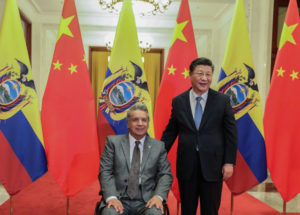
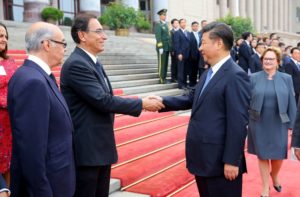
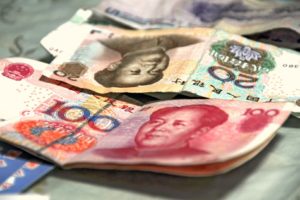
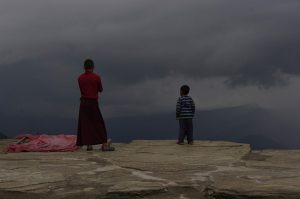


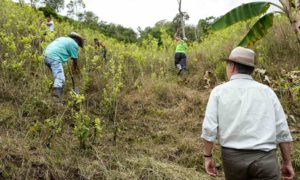
![The Amarnath cave and the market near the shrine. Besides the market, there is a large langar (food canteen) which provides food to the pilgrims during the day; and dinner for those who stay at the site for the night [image by: Athar Parvaiz]](https://dialogue.earth/content/uploads/2019/07/1-1-300x199.jpg)